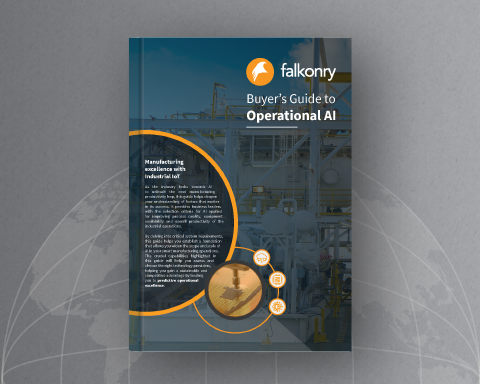Guide to IIoT Analytics
 Download Now
Download NowThe American Society of Mechanical Engineers (ASME) held a digital twins conference on May 12 and 13, 2021. Collectively the speakers, including the father of the digital twin concept, Dr. Michael Grieves, laid out a rather interesting interpretation of digital twins and the digital thread. While this interpretation doesn’t narrow the scope of what digital twins are, it does provide a useful framework for thinking about the topic and for thinking about digitalization in general.

The Big Idea of the conference was that digital twins are a class of software applications that enable the digital PLC (product life cycle). Digital PLC means supporting all of the stages in a product life cycle (design, prototyping, alpha and beta testing, volume production, sustainment and obsolescence), across all the disciplines (such as design engineering, manufacturing engineering, field support, training, accounting, supply chain, etc), with digital technologies. Digital twins are the electronic representations of the product (and processes) which make both the data and applications required to perform one’s tasks readily available at each point in the product life cycle. For example:
As you can see, this is a very expansive definition. It can easily encompass nearly every aspect of building products, operating them, providing maintenance and reporting on business outcomes. Given this breadth of scope and the variety of ways that product life cycles are managed within companies, it is easy to see that there is no single “right” way to digitalize a PLC. By extension, there is no single “right” definition of what capabilities a digital twin needs to have – it will differ for each business depending on the product life cycle stage they are trying to address and the business challenges they face in that stage. For example:
These are very different needs with very different solutions. This variety in the specifics means that executive vision and cross-group collaboration are important in developing a successful digital twin strategy.
A high level vision helps by establishing business goals and priorities. It is very easy to get distracted by technology and miss the business drivers. Without the vision setting a north star, the right objectives cannot be identified, broken down into achievable goals or pursued in the right order. In other words, a lack of direction provided by a vision means a lack of meaningful project planning. Given the breadth of technologies that digital twin companies bring, it is very important to be business-driven rather than technology-driven in selecting what to do next.
Collaboration is needed at two levels: business process and technology. As anyone who has been involved in business process management knows, the way things are done matters and it’s not always obvious what that way really is. Because digital twins should enable smooth execution of the business behind delivering a product through its lifecycle, it is important to get input from all of the stakeholders in that process. Talking with them about specific steps that need improvement will help lead to selecting the right technology and implementing the right integrations to make it usable.
Because digital twin functionality, when defined in terms of enabling a digital PLC process, has such a large scope, from 3D design to BOM management to data storage to advanced machine learning based analytics, there is no single vendor who can provide a best-in-class solution for every need. This means that interoperability will be a key requirement for any digital twin implementation. It is still very early days in this space but, if past experience is any indication of future performance, standards bodies will be too slow to keep up with the pace of innovation. Therefore, relying on standards to solve the interoperability problem won’t be viable – standards will come too late. Instead, close collaboration with technology partners and use of interoperability via well-established methods like REST APIs are likely to be the best path forward. Cloud-based solutions are also likely to play a central role in digital twin strategies because of the way that cloud-based applications and cloud storage enable sharing and collaboration by removing the silos that traditional architectures inadvertently create.
Dr. Grieves emphasized that realizing a digital PLC is a journey, not a destination. There will always be more stages to improve on and better technology to do it with. Therefore, the mindset towards implementing digital twins should be one of continuous improvement:
Falkonry plays an important role in this Big Idea. We’re not going to create your 3D drawings or enable design simulations, but our digital twin technology does let you understand asset performance during the production phase of your business lifecycle. With the insights from Clue and Workbench, your operations team will be better able to manage equipment availability, control service costs and maintain production quality for maximum output. This can be done with twins at the individual asset level or with composite twins reflecting the behavior of a line. If these areas of business are priorities in your overall vision, contact us to learn more.